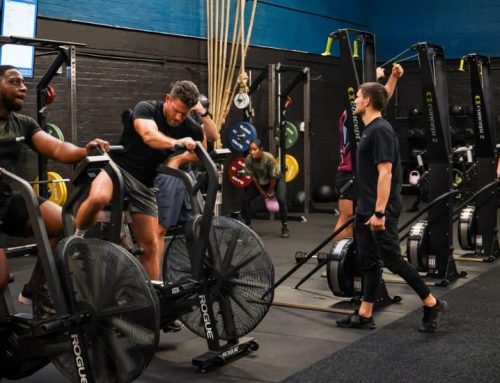Imagine waking up the morning after an intense workout feeling like you’ve been hit by a truck. Your muscles ache, your legs refuse to cooperate and you’re pretty sure that any type of movement item on your to-do list is out of the question. But hey, don’t worry, because there’s a secret weapon you can use to alleviate the pain and get back on track – foam rolling!
Once an obscure practice reserved for hardcore athletes and fitness enthusiasts, foam rolling has now taken the world by storm as an essential tool for muscle recovery. With its ability to target tightness and soreness in your muscles, foam rolling can help improve your range of motion, reduce inflammation, and allow you to go hard in your next workout without the usual body repercussions. Ready to learn all about foam rolling? Buckle up, because we’re about to roll our way to better muscle recovery!
Contents
The Benefits of Foam Rolling for Muscle Recovery
Foam rolling is one of the best ways to help your muscles recover after a tough workout. If you haven’t tried it yet, you’re missing out on some serious muscle-lovin’. Here are just a few of the benefits of foam rolling:
1. It flushes out lactic acid. You know that feeling you get when your muscles are achy and sore after a workout? That’s lactic acid buildup, my friend. Foam rolling helps break up that buildup and flush it out of your muscles, leaving you feeling less sore and more like a badass.
2. It improves circulation. When you roll over a muscle with a foam roller, you’re actually increasing blood flow to that muscle. And more blood means more nutrients and oxygen, which your muscles need to recover and repair.
3. It’s like a massage, but cheaper. Sure, you could shell out some serious cash for a professional massage, but why do that when you can foam roll at home? Plus, you get the added satisfaction of knowing you’re doing something good for your muscles all by yourself.
Overall, foam rolling is a game-changer for muscle recovery. Give it a try and see for yourself just how awesome it is. Your muscles will thank you (and so will your wallet!).
Understanding the Science behind Foam Rolling
Foam rolling is all the rage these days, but have you ever stopped to wonder how it all works? Well, you’re in for a treat, my friend, because I’m about to break it down for you.
First things first, let’s talk about fascia. No, not the stuff that covers your grandma’s couch, but the connective tissue that surrounds your muscles and organs. When your fascia gets tight, it can cause all sorts of aches and pains. Enter foam rolling. By applying pressure, you’re able to release tension and improve blood flow to the area. It’s like giving your muscles a little massage, minus the spa music and cucumber water.
But wait, there’s more! Foam rolling can also help activate your muscles before a workout, like a warm-up for your warm-up. Plus, it can aid in muscle recovery after a sweat sesh. Think of it like stretching, but better. You can get all the benefits of a good stretch, while also targeting specific areas and alleviating tightness. So, next time you’re feeling sore or just need to loosen up, grab your foam roller and get rolling!
Key Techniques for Effective Foam Rolling
Foam rolling is like giving yourself a massage, but instead of using your hands, you use a cylinder-shaped torture device. The truth is, foam rolling can be uncomfortable at first, but trust us – the benefits are totally worth it. Here are some key techniques for effective foam rolling that will help you release tension and improve your overall mobility.
1. Find your tender spots: Start by using your foam roller on your back, legs, and glutes. Search for the areas that feel tender or tight, and when you find one, stay on it for a few extra seconds. Remember to breathe deeply while you’re rolling, because if you hold your breath, you’ll turn into a human tomato before you know it.
2. Experiment with different positions: Don’t limit yourself to just rolling back and forth. You can also try some side-to-side movements, rotate your hips, or lift one leg up to apply more pressure. You might even discover a new stretch that feels amazing. Get creative and let your body guide you.
3. Be patient and consistent: Just like anything else in life, results won’t come overnight. It takes time to see the benefits of foam rolling, so be patient and persistent. Do it regularly and make it a part of your self-care routine. Your body will thank you for it, and hey, you might even develop a love-hate relationship with your foam roller!
In conclusion, foam rolling isn’t for the faint of heart, but if you can stick with it, your body will thank you. Don’t let the discomfort scare you away, because the benefits are worth it. And now that you know these key techniques for effective foam rolling, you’re ready to roll like a pro!
Incorporating Foam Rolling into Your Post-Workout Routine
Are you tired of feeling like a plank of wood after every workout? Look no further than foam rolling. Not only does it help relieve muscle tension, but it’s also an excuse to lay on the ground and roll around like a loon. Here are some tips for incorporating foam rolling into your post-workout routine:
1. Be Mindful of Your Rollin’ Speed: Like with anything, slow and steady wins the race. Don’t just plop down on the foam roller and roll around like a maniac. Take the time to target specific areas and go at a moderate pace. Besides, if you roll too hard and fast, you might fling yourself off the roller and into a wall, and nobody wants that.
2. Follow the Hierarchy of Pain: If you’re someone who enjoys pain (no judgement here), then start with the areas that hurt the most. For the rest of us, it’s best to start with the less painful areas and work up to the painful ones. Nobody said foam rolling was supposed to be a walk in the park, but it doesn’t have to be a trip to hell either.
3. Don’t Skimp on the Recovery: The foam rolling itself is great, but don’t forget to follow it up with a proper cool-down routine. Stretching and hydrating are just as important as the actual rolling. So take a few minutes to stretch out those newly-rolled muscles and maybe even treat yourself to a little post-workout snack (I won’t tell if it’s a donut or two).
So there you have it, folks. Incorporating foam rolling into your post-workout routine is a no-brainer. Plus, what’s more fun than rolling around on the ground like a human rolling pin? Happy rolling!
Maximizing Results with Consistent Foam Rolling Practice
Foam rolling might sound like something astronauts do on the moon, but in reality, it’s a highly effective way to reduce muscle tension and optimize post-workout recovery. So, if you want to maximize the results of your workout routine, mastering the art of foam rolling is a must!
The key is to be consistent with your foam rolling practice. Don’t just roll out your muscles once in a blue moon and expect to achieve your fitness goals. Incorporate foam rolling into your regular workout routine (like brushing your teeth after meals) and watch as your performance improves dramatically.
But consistency alone won’t cut it. You also need to use proper form and technique to ensure that your foam rolling practice is actually effective. Start by positioning your body in the right way (i.e., placing the foam roller under the target muscle) and using slow, steady movements to apply pressure to the muscle. Remember, foam rolling shouldn’t be painful, but it shouldn’t be too gentle either – find a balance that works for you!
Roll On to Recovery!
Well, there you have it folks. Foam rolling is not only beneficial for muscle recovery but also a great way to torture yourself after a grueling workout (we mean it in the best way possible).
Don’t let the pain scare you away, embrace it and roll on to recovery! From now on, we urge you to include foam rolling as an essential part of your post-workout routine. Your muscles (and your future self) will thank you for it.
So, let’s raise a foam roller to happy muscles, less soreness, and a healthier you. Roll on, my friends, roll on!








Leave A Comment